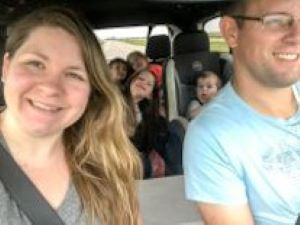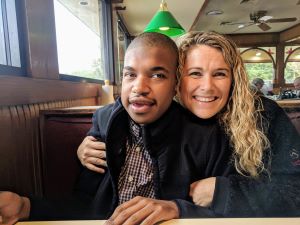NCDB Services
For most children, communication development and learning occur through vision and hearing. Because deafblindness limits access to auditory and visual information, children who are deafblind require educational services individualized to their own learning styles and abilities. Most also have one or more additional disabilities or medical conditions, further intensifying educational support needs.
Learn more about children who are deafblind
In recognition of the complexity of the disability, the U.S. Congress has authorized programs for children who are deafblind as part of education legislation since the late 1960s. NCDB and state deafblind projects are the most current programs—funded under the Individuals with Disabilities Education Act.
NCDB and the state deafblind projects exist to help increase the knowledge and skills of educators and families who work with children who are deafblind and create sustainable services through systems change.
Most of NCDB’s services are aligned with four national initiatives designed to address key needs of children with deafblindness, their families, and service providers.
Technical Assistance
NCDB's technical assistance (TA) refers to a variety of activities, such as information, training, consultation, and coaching designed to support state deafblind projects as they work with practitioners, agencies, and families to address the intense educational needs of children who are deafblind. Read more about NCDB's services to state deafblind projects →
NCDB also provides TA to some additional entities, including national family organizations.
Information Services
Our information services involve both information dissemination and product development to serve two key purposes:
- Resources and tools that support state deafblind project activities
- Information about deafblindness and high-quality instructional practices for families and practitioners
These are made available via this website and through library services provided in collaboration with Perkins School for the Blind. Go to the Info Center →
National Child Count
NCDB compiles data about children with deafblindness collected by state deafblind projects and publishes an annual report. The report provides valuable information to inform the design and delivery of TA, research needs, and personnel training. Access the National Child Count →
Our Initiatives
Identification and Referral
This initiative provides assistance and tools that help state deafblind projects increase identification and referral in their states, so that families, early interventionists, and educators can receive the information and support they need to provide appropriate early intervention and special education services.

Interveners and Qualified Personnel
Activities in this initiative are designed to build the knowledge and skills of educators serving children who are deafblind through expansion of personnel development opportunities and adoption of interveners and teachers of the deafblind.

Family Engagement
This initiative supports state deafblind projects and national family organizations in their provision of services that help families acquire the knowledge and skills required to effectively partner with service providers and advocate for their children's needs.

Transition
The Transition Initiative supports state deafblind projects in improving services and outcomes for youth who are deafblind and strengthens partnerships between the projects and national agencies, including the Helen Keller National Center.
